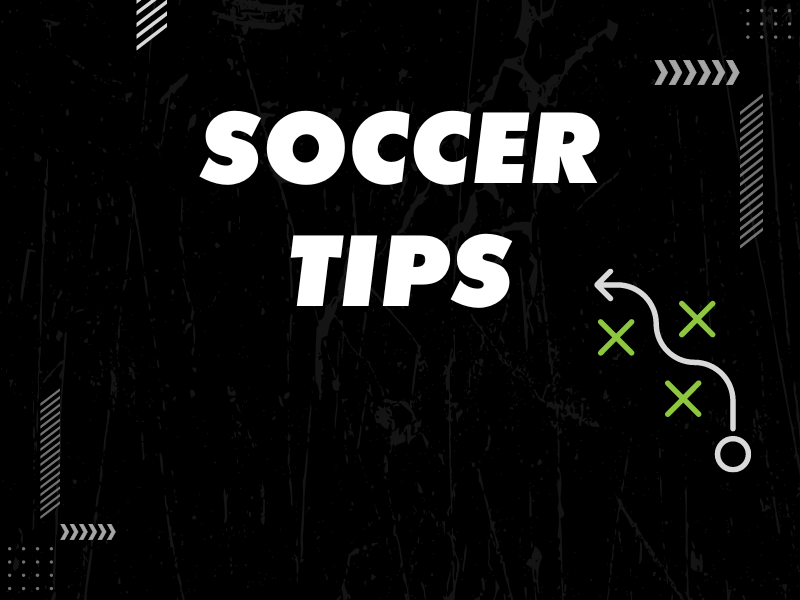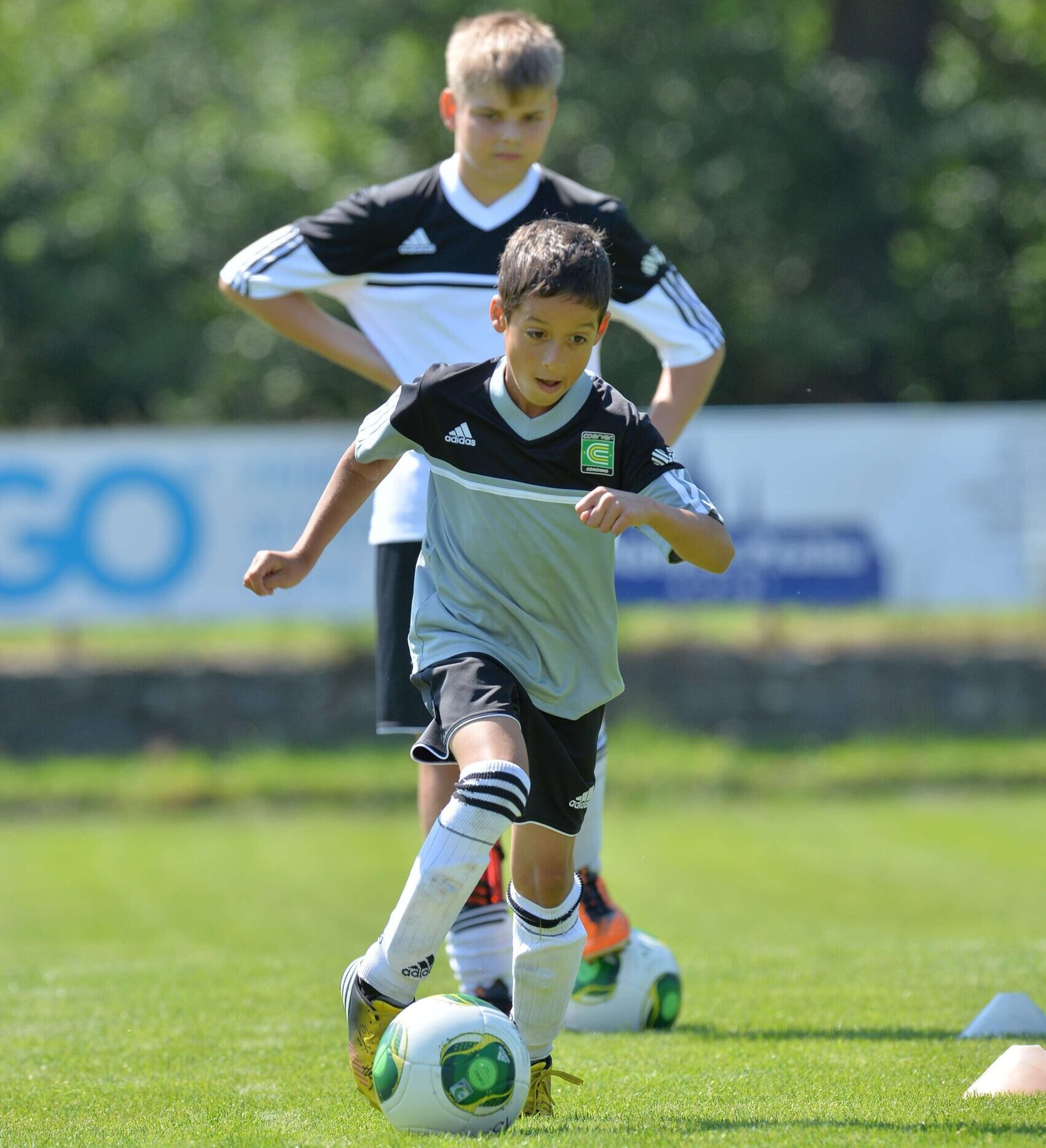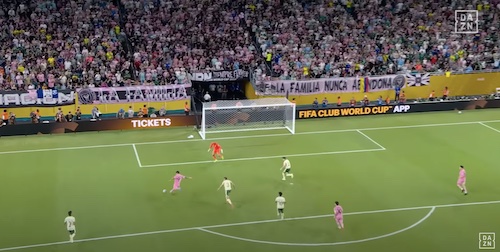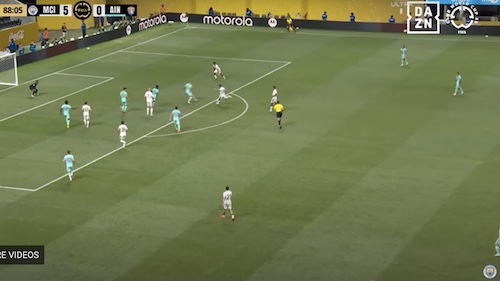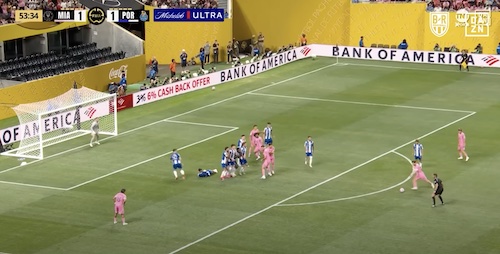If Barcelona’s soccer players, some of the best soccer players in the world, stretch out before each training session you should too. Yes, to make sure you come through practice healthy and strong and don’t pull any muscles, it’s a good idea to get the blood flowing with a bit of movement and stretch the major muscle groups before you start kicking the ball around.
Plus, it’s also good to do a light warm down jog after training and some additional stretching of areas of your body that feel tight.
Reminder: Don’t avoid stretching, especially your achilles, quads and groins. Pay extra attention to the muscle groups that have given you problems in the past. If you have a quad strain, ice after you’re down playing to reduce the swelling. Heat, ultrasound, massage therapy all have a role in treating strains and pulls if you’re injured.
• Hamstrings: Hang down and try to reach your toes; don’t push it. Keep legs and back straight. Just go down to a comfortable level for your body and then push a bit more after a few tries. You can also do this sitting down. Stretch your legs together in front of you and try to touch your toes. Then with your legs apart, touch your right toe with your right arm (ultimately aim to bring your head to your knee) and then switch sides.
• Quads: While standing on one leg, bend the other leg backwards and grab your foot with one hand. Slowly bring your foot backwards until it touches your butt. Switch legs. It’s important to keep your back straight while stretching.
• Knees: Rotate your knees in a circle, keeping them together and bending down slightly.
• Calves: Lunge forward, keeping your back leg’s heel on the ground; lean on your front leg or against a wall or teammate until you feel your calf stretch. You can also cross your legs at the ankles while standing up, then bend down at the hips, bringing your head to your knees, and essentially hugging your legs.
• Ankles: To loosen your ankles, lift your leg up and rotate your foot clockwise and then counterclockwise for several seconds. Repeat with your other leg.
• Groin: Get in the butterfly position, with your legs bent and your feet together in front of you (your legs should form a sort of diamond shape, heels pulled in to your body and touching). Try to push your knees down to the ground and/or bring your head down to your feet. Go easy though.
• Abdomen: Lying face down, lift your body off the ground and on to your elbows—hold for a minute; lean to the right side and then left–builds strength.
• Stomach: To warm up the stomach, lie down with your hands near your shoulders and then lift your waist a few inches off the ground using your stomach muscles. To develop the stomach muscles even more, do full-fledged sit-ups and/or use weights. Reverse crunches can also get the job done. Simply lie down on the floor and bend your legs in the air so that your body resembles the letter L.
• Obliques: Raise your arms above your head and bring your hands together. Then, in a large arc, move your hands down to your left foot, then over your head and to your right foot. Another exercise is this: maintain a straight posture while keeping your legs spread apart and muscles relaxed. Then, put your hands on your hips and swing clockwise in a smooth circular motion and then repeat but this time counterclockwise. Or, do the twist! Lie down and bring one leg over your knee and then touch with your opposite elbow. Switch legs and elbows to work both sides.
• Twists: Lie down and bring your knees to your chest. Then drop the knees to one side and twist to the other side. Arms stretched out for balance. Also try keeping one leg straight and pull one knee into your body and then dropping that knee to the side.
TIP: To fully develop abs and obliques it’s important to use heavier weights instead of increasing number of reps. Just like other muscles, such as quads or biceps, abs and obliques can be developed more efficiently with weights.
• Back: Keep your legs spread apart and bring your hands together. Then, bend at your waist and stretch your hands out in front of you but do not try touching the ground. Next, bring your arms behind your back (while keeping arms together) and then stretch backwards.
• Neck: To loosen your neck, move your chin to your right shoulder and then look down at the floor. Repeat motions to the left. Remember to rotate your head gently, in a circular motion.
*Try using a styrofoam pad or a soccer ball to work out kinks in your muscles and loosen them up. Balance on the ball or foam pad, pushing into it to massage the muscles and stimulate blood flow.
After completing a routine of basic stretches such as this, you can then move on to more intense activities and drills. This is where your warm-up as a soccer player will differ greatly from those of other athletes. It’s where you start doing a lot of ball work and preparing your body for what it’s expected to do during the game.
Learn more: Warm Up Drills











